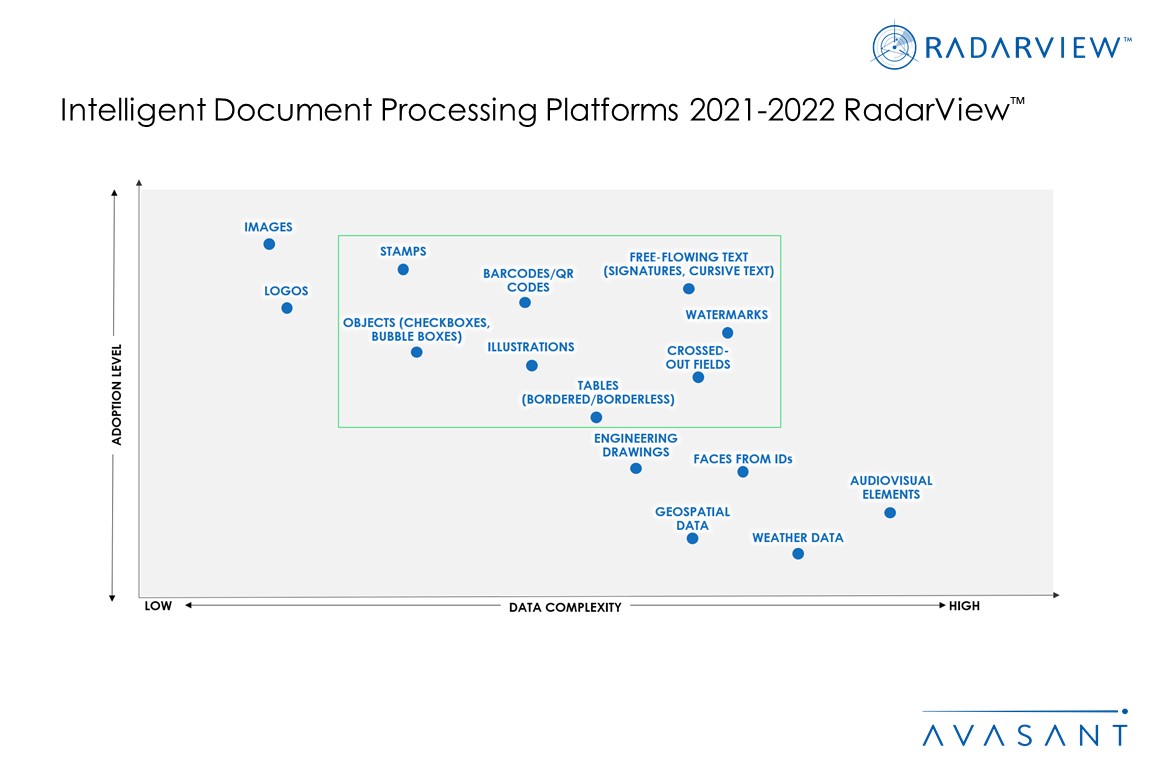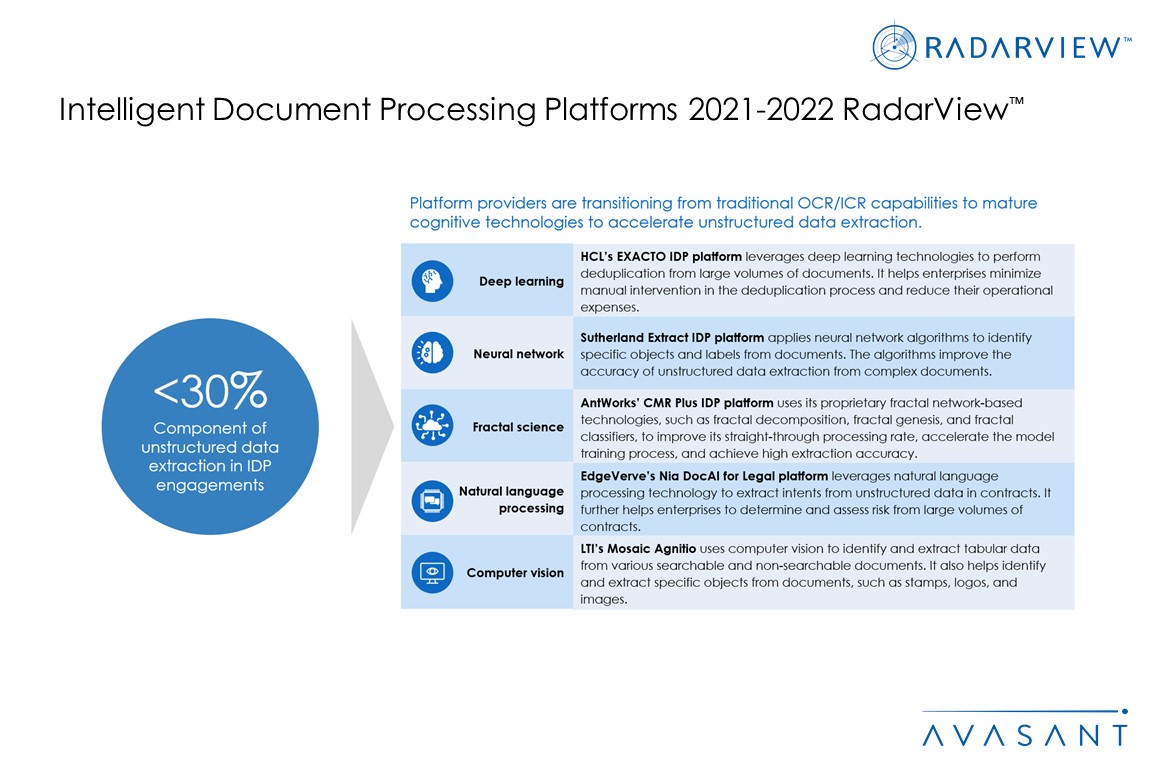This RadarView addresses the need for enterprises to adopt intelligent document processing (IDP) platforms to digitize their paper-intensive workflows and gain actionable insights from unstructured data. It covers key trends shaping the market and top bets made by IDP platform providers.
The report features detailed RadarView profiles of the 15 platform providers, along with their solutions, offerings, and experience in assisting enterprises in their document processing journeys. It also demonstrates how providers are incorporating cognitive capabilities into their IDP platforms to improve unstructured data extraction. Each profile provides an overview of the platform provider, their products and modules, and a list of clients and partnerships, along with brief client case studies. Each profile concludes with analyst insights on the provider’s product maturity, enterprise adaptability, and future readiness.
Why read this RadarView?
The pandemic has accelerated the need for digitization to achieve growth in every market segment. With paper-based workflows reducing overall workforce productivity, enterprises are leveraging cognitive technologies to streamline document processing across various departments. Platform providers are transitioning beyond traditional optical character recognition-based data extraction to generate actionable insights from complex, unstructured data. These trends, and others, are covered in our Intelligent Document Processing Platforms 2021-2022 RadarView™.
The report highlights key market trends in the document processing space and Avasant’s viewpoint. It aids companies in identifying top platform providers to assist them in document processing by implementing IDP platforms. It also offers an analysis of each platform provider’s capabilities in technology and delivery support, thus enabling organizations to identify the right strategic partners for IDP.

Featured providers
This RadarView includes a detailed analysis of the following IDP platform providers: ABBYY, AntWorks, Automation Anywhere, Datamatics, EdgeVerve, HCL, Hyland, Hyperscience, Kofax, LTI, OpenText, Parascript, Sutherland, UiPath, and WorkFusion.
Methodology
The industry insights and recommendations presented are based on our ongoing interactions with enterprise CXOs and other key executives; targeted discussions with platform providers, subject matter experts, and Avasant Fellows, along with lessons learned from consulting engagements.
Our evaluation of platform providers is based on primary input from the providers, focused briefings, public disclosures, validation from their clients, and Avasant’s ongoing market interactions. The assessment is across the three dimensions of product maturity, enterprise adaptability, and future readiness, leading to our recognition of those platform providers that have brought the most value to the market over the last 12 months.
Table of contents
About the report (Page 3)
Executive summary (Pages 4–7)
-
- Key enterprise IDP trends shaping the market
- Avasant recognizes 15 top-tier providers supporting the enterprise adoption of IDP
Lay of the land (Pages 8–16)
-
- RPA providers and service providers integrate IDP capabilities to gain competitive advantage
- Europe observes an increase in demand for multilingual document processing capabilities
- Banking and financial services continue to be the biggest consumer of IDP platforms, followed by healthcare and life sciences and insurance
- Providers are enriching the IDP value chain with cognitive elements
- Extraction of insights from niche data sets is emerging as a key differentiator
- Cloud-native capabilities are simplifying the platform ecosystem
RadarView assessment (Pages 17–23)
-
- Methodology and coverage
- Interpretation of classification
- RadarView assessment
Platform provider profiles (Pages 24–54)
-
- Detailed platform provider profiles providing a 360-degree view for ABBYY, AntWorks, Automation Anywhere, Datamatics, EdgeVerve, HCL, Hyland, Hyperscience, Kofax, LTI, OpenText, Parascript, Sutherland, UiPath, and WorkFusion
Authors (Page 56)
Read the Research Byte based on this report.









